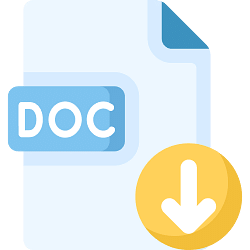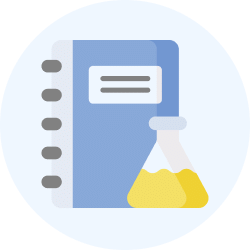Textbook Solutions: South Africa: Society, Culture and Economy | Footprints Class 7: Book Solutions, Notes & Worksheets PDF Download
I. Fill in the blanks.
1.
Ans: Coastal plain and the mining areas near big cities
2.
Ans: Afrikaners
3.
Ans: Tribes in South Africa
4.
Ans: Johannesburg
5.
Ans: 11 official languages
II. State whether the following statements are true or false. Rewrite the corrected statements in your notebook.
1.
Ans: False. Nelson Mandela was the leader of the African National Congress (ANC).
2.
Ans: True. Black South Africans make up the majority of the population.
3.
Ans: False. Indlamu is a traditional dance in South Africa.
4.
Ans: False. Sesotho, Setswana, isiZulu, and isiXhosa are languages spoken in South Africa.
5.
Ans: False. South Africa is the largest producer of chromium and vanadium ores, not ferrosilicon and silicon metal.
III. Look at the picture and answer the questions given below:
1.
Ans: Diamonds.
2.
Ans: Limpopo and Kimberley (Northern Cape).
3.
Ans: Diamonds are considered valuable due to their rarity, use in jewelry, and various industrial applications.
4.
Ans: South Africa produces about one-third of the world’s diamonds, mainly from mines in Limpopo, Kimberley (Northern Cape), and Pretoria (Gauteng).
IV. Answer the following questions in brief.
1.
Ans: Two tribes that inhabit South Africa are the Zulu and Xhosas.
2.
Ans: The most widely spoken language of South Africa is Afrikaans.
3.
Ans: The two types of farming practiced in South Africa are Subsistence farming, which involves small farm holdings growing cereals, fruits, and vegetables for local needs, and Commercial farming, which involves large, mechanized farms producing mainly for trade.
4.
Ans: Uranium reserves in South Africa are found in the Witwatersrand Basin, the Karoo region, Limpopo, and Northern Cape.
5.
Ans: Tourism in South Africa is considered a growing economic activity due to the country’s climate, varied physical landforms, wildlife, national parks, reserves, and fisheries attracting thousands of tourists each year.
 |
Download the notes
Textbook Solutions: South Africa: Society, Culture and Economy
|
Download as PDF |
V. Answer the following questions in detail.
1.
Ans: South Africa grows a variety of crops, including maize, sugar cane, soybean, potatoes, wheat, sorghum, tobacco, and sunflowers. Horticulture contributes significantly, with fruits like apples, pears, apricots, peaches, bananas, pineapples, papaya, grapes, oranges, and grapefruit being widely cultivated.
2.
Ans: Livestock rearing in South Africa includes cattle, sheep, goats, poultry, and ostriches. It is primarily practiced in the High Veld regions, where grasslands provide pasture, and is more common in mixed farming systems. Products include dairy, meat, wool, eggs, and feathers.
3.
Ans: South Africa is rich in minerals, with the world’s largest reserves of platinum group metals (PGMs), manganese, and chromium. One important mineral is gold, which is produced near Johannesburg, with the Witwatersrand mines being particularly significant, producing about one-third of the world’s gold.
4.
Ans: The industrial sector is important in South Africa due to a rich resource base in agriculture, fishing, energy, and minerals; a well-developed rail network; an extensive road system; nearby port facilities; and a large labor force. Industries include agro-based sectors like food processing and mineral-based sectors like iron and steel, transport equipment, and chemicals.
5.
Ans: South Africa’s international trade is significant, with exports including minerals such as gold, diamonds, and platinum, and agro-based products like canned fruits, vegetables, and meat. The country imports goods like electrical machinery, vehicles, and mineral fuels from countries like the USA, China, Japan, and the European Union.
|
32 videos|186 docs|40 tests
|






















